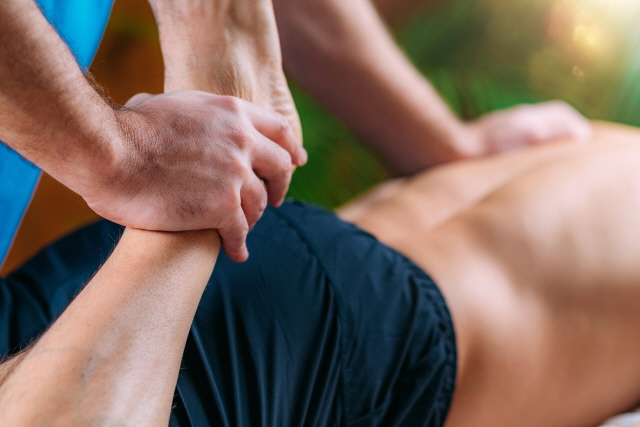
By Winston Lee L.Ac., Ph.D., KMD
The sacroiliac (SI) joint connects the sacrum at the base of the spine to the iliac bones of the pelvis, transferring weight between the upper body and legs and providing stability. It’s a synovial joint with minimal movement, reinforced by strong ligaments. SI joint dysfunction or inflammation, often caused by injury, arthritis, pregnancy, or infection, can result in lower back and pelvic pain, difficulty sitting, and stiffness. Treatment options include physical therapy, pain relief medications, injections, and sometimes surgery. Understanding the SI joint is crucial for managing related pain. Sacroiliitis is a painful condition that affects one or both SI joints.
Common reasons for SI joint pain include injury from falls, car accidents, or sports; arthritis such as osteoarthritis or ankylosing spondylitis; and pregnancy due to hormonal changes and added weight. Repetitive stress from activities or heavy lifting, leg length discrepancy, and rare infections can also strain the SI joint. Inflammatory conditions like psoriasis or inflammatory bowel disease may contribute to SI joint pain. These factors can cause dysfunction or inflammation, leading to pain and discomfort in the lower back and pelvis.
Back pain is widespread in the United States, with statistics showing that 30% of the population suffered back pain in the last three months. However, SI joint pain is a significant cause of back pain. SI joint pain has a much clearer cause than herniated discs, spinal stenosis, piriformis syndrome, and other conditions. In this case, acupuncture can treat it effectively and quickly.
To treat SI joint pain using acupuncture, specific points are targeted for needle insertion. These points include the iliolumbar ligament next to the iliac crest, the posterior SI ligament next to the iliac crest, the interspinous and supraspinous ligaments located on L2/3, L3/4, L4/5, and the facet joints on L3, L4, and L5. The procedure begins with inserting needles at these designated points. Once the needles are in place, each is twisted 10 to 20 times to stimulate the area.
Following the needle insertion and stimulation, the practitioner holds the patient’s left or right ankle, using their hand to flex and extend it by 20 degrees. This movement is designed to create mobility in the SI joint. Subsequently, the practitioner holds the patient’s left or right knee, lifting it by 3 inches and moving it parallel to the table, further encouraging joint movement.
After these manipulations, the needles are left in place for 5 minutes to allow for maximum therapeutic effect. At the end of this period, all needles are carefully removed. This comprehensive approach, which combines precise needle placement with specific joint movements, effectively alleviates pain and improves mobility in the SI joint.
To prevent SI joint pain, maintaining good posture is crucial. A doctor should advise them to sit and stand with a straight back, shoulders relaxed, and feet flat on the floor. Use ergonomic chairs and supportive cushions if sitting for long periods. Avoid slouching or leaning to one side. When lifting, bend at the knees and keep the back straight. Regularly alternate between sitting and standing to prevent stiffness. Incorporate exercises that strengthen core muscles and improve posture, such as Pilates or yoga. Stretch daily to maintain flexibility in the muscles supporting the SI joint. These practices can help reduce SI joint strain and pain.































